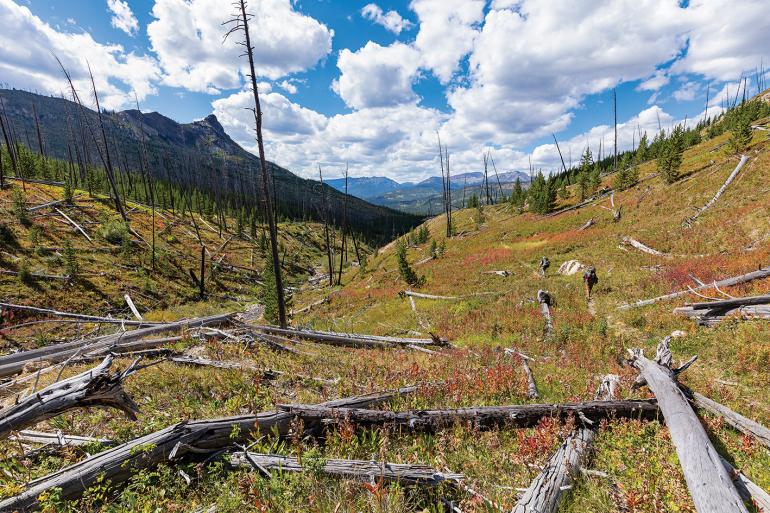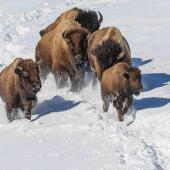High-Country Hues
None can ignore autumn, when the world explodes in dazzling displays of color. Amid Montana's dispersed evergreen hillsides, chokecherry and aspen commence a fireworks show of reds and yellows. Along the streams and rivers, cottonwoods glow a loud and brilliant orange. And as chlorophyll drains with the change of the seasons, all these landscapes take on a new look, the spectacle lending photographers, painters, and poets yet another magnificent Montana canvas. For excellent leaf-looking, take a pleasant, wide-eyed hike or drive—up South Cottonwood, into the Spanish Peaks, along the banks of Hyalite Reservoir, or anywhere else that tickles your fancy—and enjoy this most splendid season in our most precious part of the world.
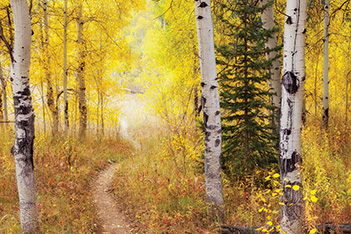
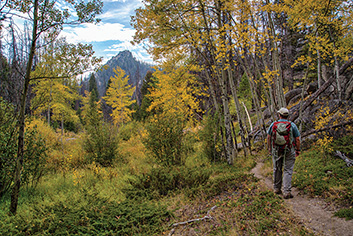
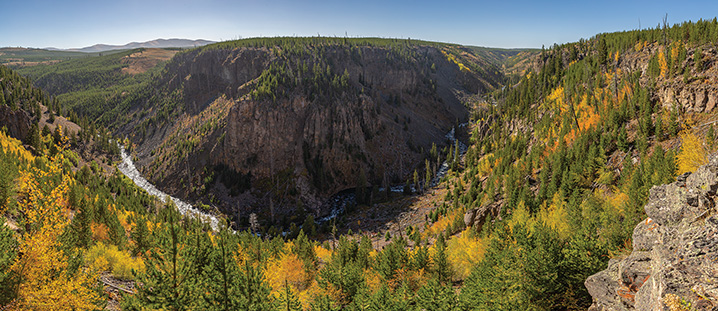
Life in Transition
As seasons change, trees shift chemically in response to the environment around them. Deciduous trees go dormant through the winter and photosynthesis is put on hold. But before their leaves fall and energy production pauses, there is a transition period, and depending on weather and rainfall, it can give birth to grand and vibrant glory.
 |
 |
 |
The element in leaves making them appear green is a pigment called chlorophyll, which is partially responsible for producing carbohydrates necessary for growth via photosynthesis. The other primary pigments inside a leaf are carotenoids, responsible for yellows, oranges, and browns; and anthocyanins, which emit the lively reds and deep purples.
When a tree goes dormant, chlorophyll stops its function and the other pigments take over. Regardless of what kind of weather rolls in, we can more or less count on carotenoids to expend their colors. Anthocyanins, on the other hand, are activated only when sugars are trapped inside the leaf, and this is extremely weather-dependent.
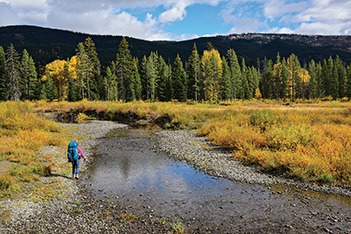
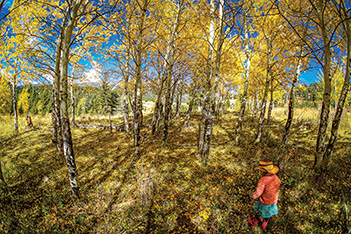
The perfect fall rainbow comes out with a series of warm sunny days and cold, dry nights just above freezing. An early frost can shut down the anthocyanin's ability to emanate. That said, a late spring or a severe summer drought can have its own effects on fall's transition, usually by delaying the leaf-turning period by a week or two.
Around Bozeman, aspen, birch, and cottonwood will undoubtedly be shimmering in magnificent autumn splendor. And if the weather aligns, reds will show too, with maple, fireweed, and huckleberry exuding intoxicating displays of change. —Corey Hockett


